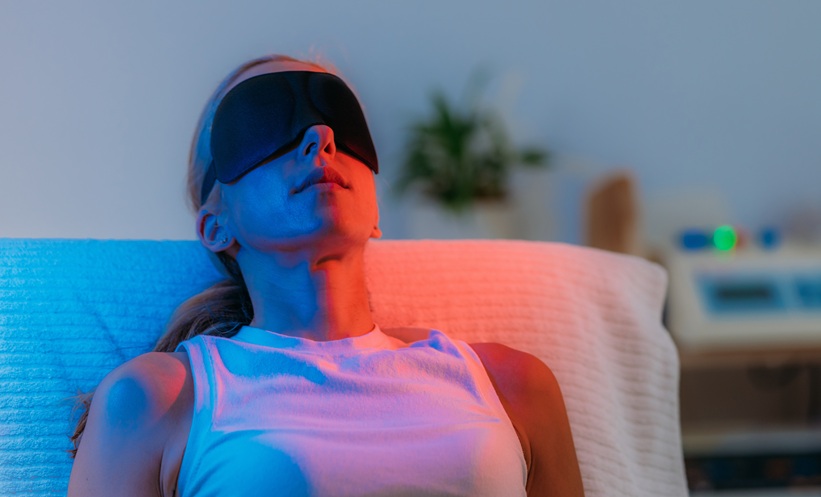Chytra V. Anand, CEO of Kosmoderma Clinics and Consultant Cosmetic Dermatologist Kosmoderma Clinics, Bangalore, India
![]()
Interviewed by Anaya Malik | Editorial Assistant, EMG-Health
![]()
Q: After your studies in London, UK, you returned to India to follow your dream of opening a chain of skin and hair clinics which provide affordable care. Why is it so important to you that this high-end treatment is affordable for all of your patients?
A: The requirements of these procedures are for all… after all who does not want to look their best? The key criteria were making these procedures accessible to the clients and in India that means affordable. My wish is for all Indian people to have access to world-class facilities with a high standard of care.
Q: As the founder and CEO of the globally renowned Kosmoderma Skin & Hair Clinics, what are your views on work–life balance as a businesswoman, having come from a scientific background?
A: I enjoy the interplay between being a doctor and a businesswoman; they both require dedication and hard work. However, science needs us to keep abreast and constantly read about and keep updated on emerging technology, whereas in business a lot is learnt from experience and by being on the field. This in fact makes me work harder as I cannot make mistakes as a doctor but as a businesswoman I can write them off and learn from them.
Q: How have you been able to strike a balance between managing a company and treating patients?
A: Honestly, it was tough at the start to separate the two, but now I have a clear definition. When I am on the floor as a doctor I do not discuss any business-related issues; I focus on my patients and procedures and I am treated the same as any other doctor in my organisation. This meant putting in standard operating procedures and being process-driven so that the business side runs as seamlessly as possible with an administration team that is on the floor to manage day-to-day activity. It took me a while to achieve this definition, but today I have defined key roles and responsibilities for each profile and I adhere to them no matter what, as being flexible can hurt a company when it grows into a larger organisation.
Q: You are an internationally renowned cosmetic dermatologist. Where do you think your enhanced perception of aesthetics, a quality highly respected by your patients and colleagues, arose from?
A: I have always enjoyed beauty in all forms, be it in a person, art, or landscape, and this was one of the main reasons that I chose aesthetic dermatology. It feels natural for me; I do not need to think much as the work I do comes to me naturally. Of course, practice only makes us better and I am always thinking of how to innovate and better myself, and I am happy to share this with my colleagues and the aesthetic dermatology community.
Q: Your leadership in the International Academy of Aesthetic Medicine (IAAM) derived from the observed lack of exposure to cosmetic dermatology and training in regular practice. What are some of the significant challenges associated with dermatology training in India?
A: In India, until recently, medical colleges did not expose postgraduate dermatology students to cosmetic work (i.e., peels or lasers), so doctors were unprepared for this field; hence why I started the IAAM academy. Now, 70% of Indian medical colleges have basic laser services. However, doctors still need specialist training for aesthetic work as the skill set is entirely different from clinical medicine.
Q: How did you find this compared to the training you received in London?
A: I went to London as this type of training was not available in India. I believe that doctors in India should do a stint abroad to hone their skills and bedside manner.
Q: How have your educational experiences influenced your teaching style in the IAAM, training doctors from Asia, Europe, and the USA?
A: Teaching styles vary country-to-country based on the culture. In Asia people do not tend to openly ask questions or express doubts; they prefer to do it personally, one-to-one. Therefore, in training, unless to point someone out, they do not give you feedback or a chance to interact. They are extremely respectful towards speakers and teachers and consider it rude to raise queries. In Asia, they prefer experiential sharing. In the USA and Europe, the teaching style is more scientific-based, with facts and figures supporting the clinical experience. The setting is highly interactive with a constant flow of conversation.
Q: As well as running a business and working in clinic, you feature on local and international television, talk shows, radio, and specialist programmes. Which of your other projects, stemmed from your global presence in dermatology, do you enjoy most and why?
A: These originated more from being an authority in the field in India, rather than global presence. I enjoy all of them as I believe the audience still needs to be educated and any form of messaging is worthwhile if I can reach out.
Q: Since introducing fractional laser for acne scar rejuvenation and nonsurgical thread lift procedures in India, how have attitudes to cosmetic treatments such as these changed?
A: When I introduced these procedures into India people were sceptical, but today the entire dermatology community has embraced these procedures and people are aware of the access they have. Alongside this, I conduct numerous studies for various laser and injectable treatments, and I help companies write protocols for the Indian population, customising the procedures.
Q: You are credited with having performed the highest number of Botox and filler injections in South India. Why has there been such an increase in the demand for Botox and filler injections in recent years?
A: I credit my team for this as we have all been spreading information in society regarding the safety and applications of Botox and fillers, which has established us as number one. I also give credit to my patients who are happy to share their experience and results, which leads to increased customer confidence.
Q: Social Projects to aid female empowerment and entrepreneurship by speaking at various colleges and business conferences encouraging and mentoring women is something you are well documented as being heavily involved in. What are the biggest challenges you have faced as a woman in business and in science?
A: Everyone asks me about work–life balance and working life as a woman. I say this to women all the time: the balance depends on you and it’s never equal. One aspect of your life will always supersede the other and the only choice you have in this matter is to decide how much of which you want. To be successful and stay successful you must be ready to work hard and be dedicated. There is no time off. Do not be afraid to ask for help from peers and seek mentorship. When you make a mistake, take time to evaluate and learn from it, do not simply push it out of the way. Our mistakes are the best teachers. Do not get yourself twisted into knots over decisions and people’s perception of you; it’s a time waster. Early on in business, I had issues as a woman when I had to get a bank loan for equipment and rental lease on properties. They would stereotype me; they would commonly say “You are a woman, how will you repay? When you get married you will stop working, and then what happens?” I just treated this as ignorance and took it all in my stride, patiently allaying their queries.








